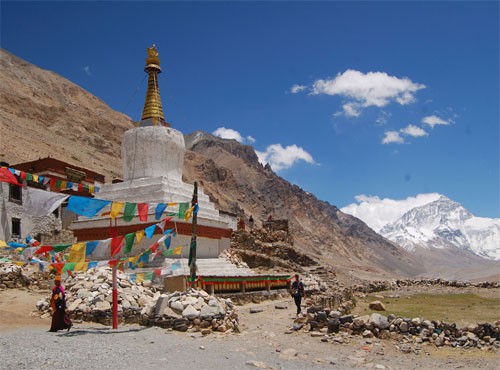The Everest Kangshung Face trek Overview:
The Everest Kangshung Face trek reveals Mt. Everest's hidden and arguably most beautiful side. Mount Everest has three faces: the North Face, the South Face, and the East Face, known as the Kangshung Face. This trek offers a rare opportunity to see the Kangshung Face up close. This 21-day journey in Tibet takes you through pristine valleys like the Kharta and Karma Valleys, filled with alpine lakes, grazing pastures, and wildflower meadows. You'll experience stunning views of some of the world's tallest mountains, including Mt. Cho Oyu (8201m),Mt. Makalu (8481m),Mt. Lhotse (8516m), and Kanchenjunga (8586m), along with the Everest Kangshung Face.
We start our journey by touring Lhasa's landmarks, including the Potala and Norbulingka Palaces, Tibet Traditional Hospital, and Barkhor Bazaar. We also visit Sera Monastery, Drepung Monastery, and Jokhang Temple in Lhasa. Our trek begins in Kharta and heads towards Everest's Kangshung Face. After admiring this stunning eastern face of Everest, we return to Kharta. We drive to Rongbuk via the Everest Base Camp (north face). In Rongbuk, we visit the world's highest monastery, Rongbuk Monastery. We continue our drive to Kyirong and conclude our journey with a drive to Kathmandu. Along the way, we cross several high passes and are constantly surrounded by the towering Himalayan peaks and glaciers, making this trek incredibly rewarding.
The Everest Kangshung Face Trek combines Tibet's historical heritage with its majestic Himalayas, making it one of the most breathtaking treks in the world. Adventure Club Trek has been organizing trips in Tibet since 2008. Besides the Everest Kangshung Face Trek - 21 Days, we offer the Tibet - Everest Base Camp Trek - 18 Days. Our Lhasa and Everest Base Camp Tour - 8 Days or Kathmandu to Lhasa via Everest Base Camp - 9 Days are ideal for shorter trips.



